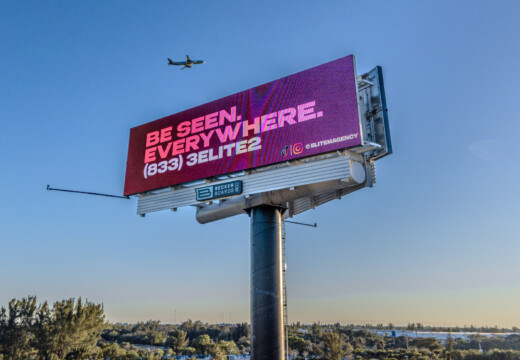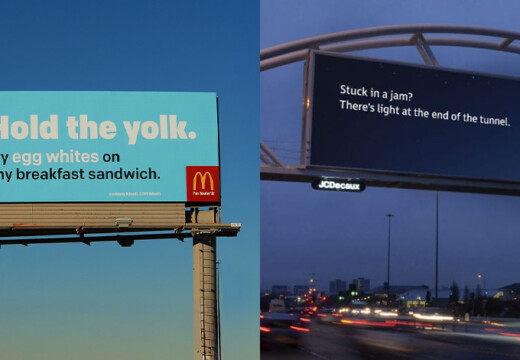
The Future of Self-Serve Advertising
Learn why self-serve advertising is changing the advertising landscape, and why businesses of all sizes should take advantage of the changing media.
Gone are the days of working through a media buying agency to create advertising campaigns, thanks to the emergence of self-serve advertising platforms. Typically, larger companies will work with media buyers to leverage traditional advertising media platforms, such as billboards and other OOH media, television, radio, and print.
While this remains true, companies are disrupting the advertising game by allowing self-serve advertising, making it both affordable and accessible to businesses of all sizes.
Online Advertising
Online advertising was just the beginning of self-serve ad platforms. Google and Facebook were some of the first self-serve ad platforms, allowing any business to go online and set up an online advertising campaign. By inserting budget, ad creative, target audience, and a few more pieces of information into the platform, you could have a successful ad campaign up and running within a matter of hours.
Because of the ease of online advertising, traditional media started to become outdated. Companies no longer felt the need to allocate budget to both media buyers as well as expensive traditional advertising campaigns and contracts. Google and social ads took over the industry, however, many started noticing the need for multichannel advertising campaigns.
_____
Evolution of Self Serve Advertising
This is where self-serve advertising started to evolve. Before they started Blip, co-founders Brent Thomson and James Munnerlyn wanted to try out digital billboard advertising. When they realized they would have to go through the process of working with media buyers or the sign owners directly, as well as the cost to contract out space on a digital billboard, they came up with the idea of self-serve digital billboard advertising without contracts. Brent and James pitched the idea for Blip, and now digital billboard advertising has never been easier.
The COVID-19 pandemic has helped push self-serve ad platforms forward even more. For a while, companies were still heavily in favor of using media buyers to pick advertising inventory. However, when the pandemic caused the market to change, individuals realized it would be more cost-effective for them to advertise through self-serve platforms.
An article published by Lynn D Johnson of AdMonsters wrote, “It’s just not cost-efficient to have a salesperson go through the traditional contract process for transactional or low-spend advertisers, so self-service tech is very appealing for not only capturing incremental revenue but also providing workflow efficiency, one publisher told us.”
As the demand for self-serve advertising has increased, many companies are following in the footsteps of Google, Facebook, and Blip. Hulu recently started allowing self-serve advertising on their streaming platform, making it one of the first “television” platforms to allow for self-serve ads. Spotify, YouTube, TripAdvisor, Amazon, and Walmart have all adopted a self-serve advertising platform on their sites as well.
_____
What We Can Expect in the Future
Disney’s VP of Self Service Platform Sales, Sylvester Phifer, said, “Through proprietary research conducted with Advertiser Perceptions, the Underrepresented Small Business Study completed in January 2022, we discovered that 60% of respondents said they need to prove ROI more effectively, 52% said they want to better understand who is seeing or engaging with their ads, and nearly 50% cited ‘insufficient advertising budgets’ as a pain point.”
Even in 2022 brands are still facing issues that can be met through self-serve advertising. Addressing these roadblocks among SMBs can help the industry determine how best to appeal to advertisers and what needs are to be met.
With self-serve growing more popular, especially in the SMB market, we can expect to see more of these platforms emerge. While the majority of self-serve advertising is for online media, more offline, traditional channels like TV, radio, and print will most likely enter the arena as well.
_____
Additional Self-Serve Platforms
If you’re looking to build some robust multi-channel ad campaigns, here are a few additional self-serve platforms to take advantage of (in addition to Blip):
Online Ads
- Google Ads
- Facebook/Instagram
- Snapchat
- TikTok
- TripAdvisor
- Amazon
- Walmart
Television
- Hulu
- Spectrum Reach
Radio
- Spotify
- iHeart Ad Builder
- AudioGo
_____
The advertising landscape is continually changing, and it’s interesting to see how technology is making traditional media like billboards and TV more accessible than ever before for businesses of all sizes. If you’re looking to start your next self-serve advertising campaign with Blip’s billboard marketplace, you can create an account here.


